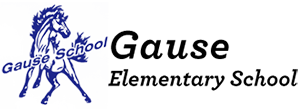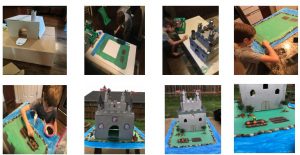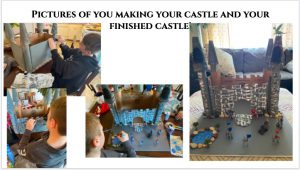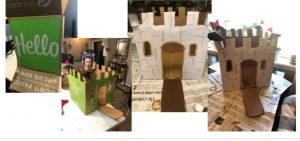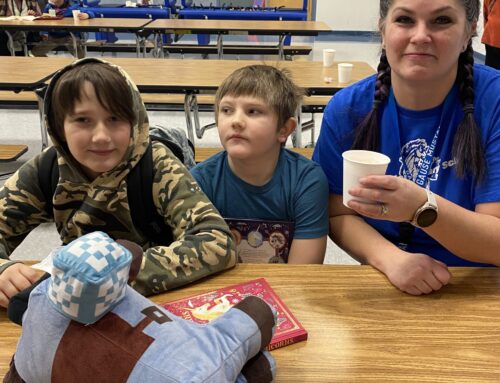If home is your castle, then this class assignment to create homemade castles was perfect for the Gause fourth grade students of Colleen Davis and Katie Anderson during remote learning.
The idea came about after the teacher team brainstormed projects to do outside of “book work” that would have a creative component and could be done from home with materials students hopefully already had there. “We came up with the idea of building a castle that would connect with our current unit of Europe in the Middle Ages,” Davis explained.
“The kids really loved it and we were surprised at how into it they got,” said Anderson. “They were very creative in the use of their materials, such as using real moss, Halloween candy, Legos, actual wood and rocks for their designs.”
“And the time and effort to build a castle also helped sustain interest in the topic, as students keep connecting the content back to their projects as we progress through the unit,” said Davis.
The assignment was to design and build a medieval castle using supplies from home. Each student sent images of the steps they went through in its creation and the finished piece. They also wrote a paragraph explaining their building process.
Each castle had mandatory elements that included a main gate or drawbridge, turrets or towers, cut out windows, battlements and flags. Students could also add optional pieces such as a moat, dungeon entrance and gardens.
“This assignment got kids excited,” said Anderson. “They haven’t been able to do as much hands-on learning during this virtual school phase. Students were encouraged to work on the project with their family and siblings and I know many of them enjoyed being able to do the project together and be creative.”
“It was also really fun to share the pictures kids sent and have them talk about their project with the other students,” said Davis. “They shared their process and finished project, and then their peers got to comment on it. This assignment went a long way toward connecting with each other and strengthening our classroom community, which is definitely more challenging virtually.”
The two teachers agreed that technology continues to be a challenge in remote learning, but everyone is getting better with it as time goes on. Another significant challenge for students is missing friends and the socialization that comes from being together in a classroom.
According to Davis however, all things considered, her students are doing great. “We have good participation,” she said. “These kids are showing up and they are working hard. They have had amazing patience and flexibility as we figure this all out, and genuine resiliency. This situation is hard, but through this process they really are learning new skills and life skills of dealing with challenges. They are doing work in ways now that I wouldn’t have imagined possible a year ago. But they are doing it!”
##
